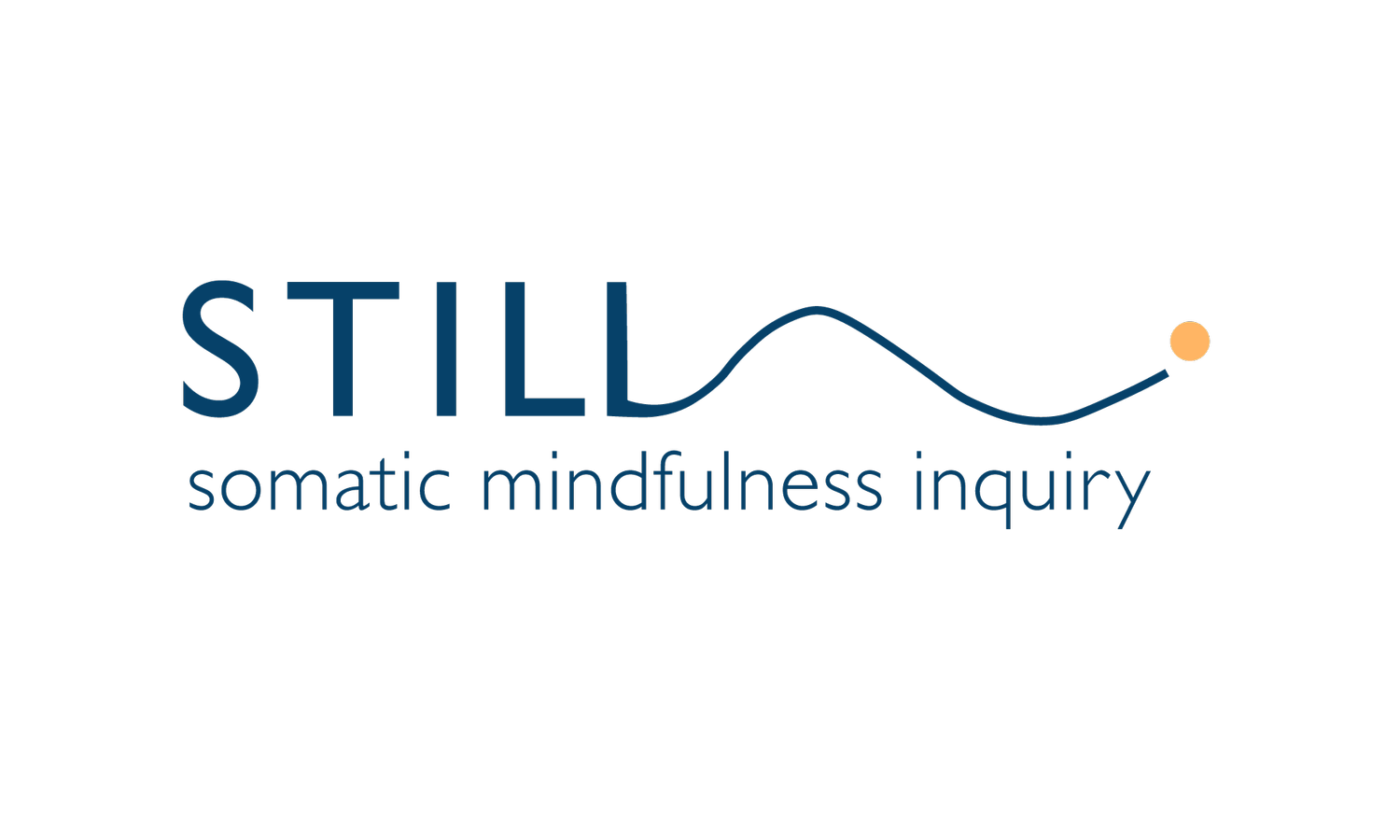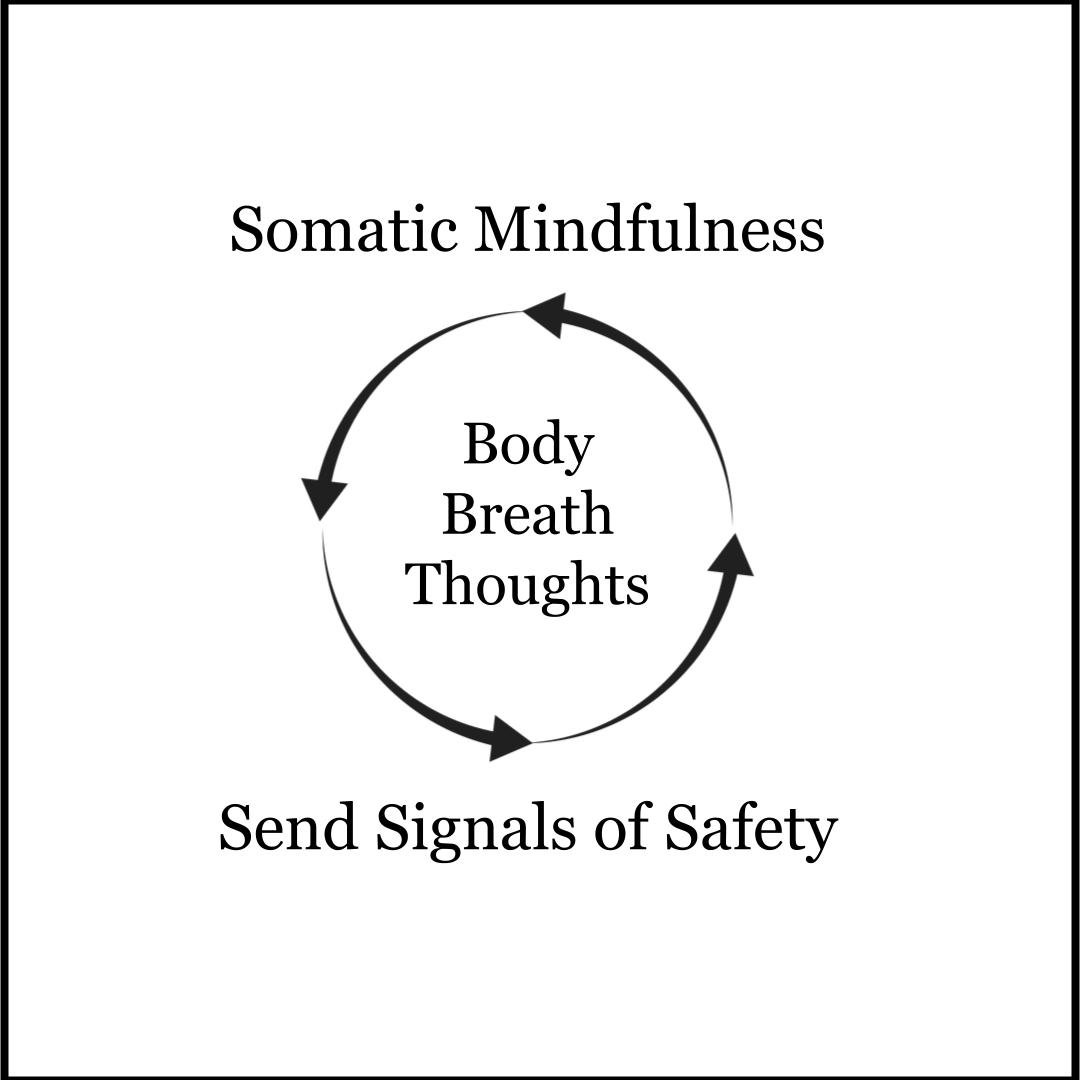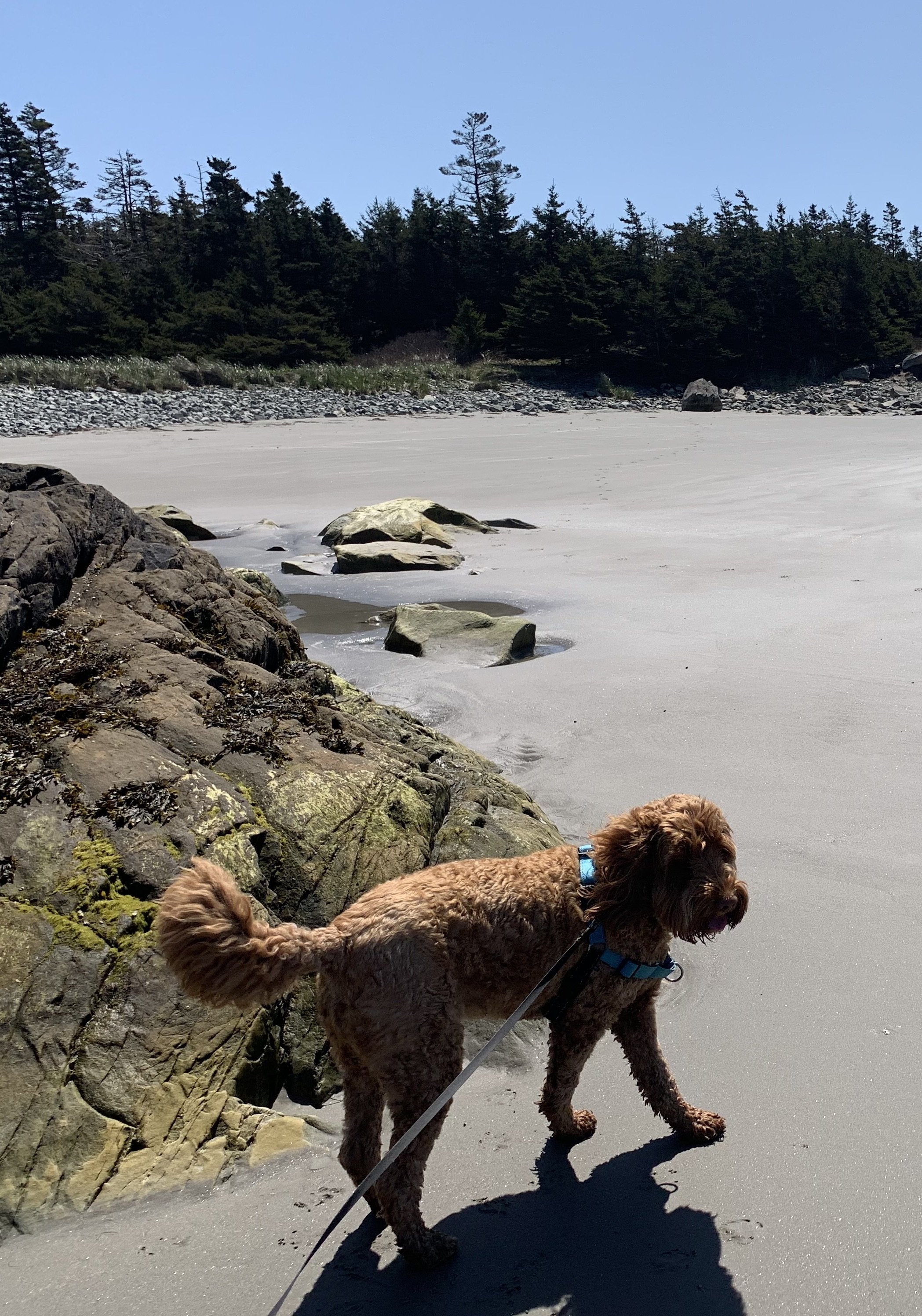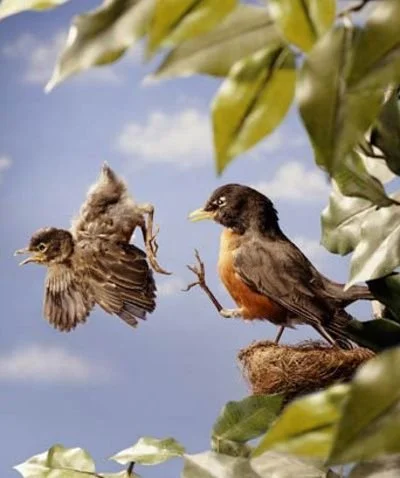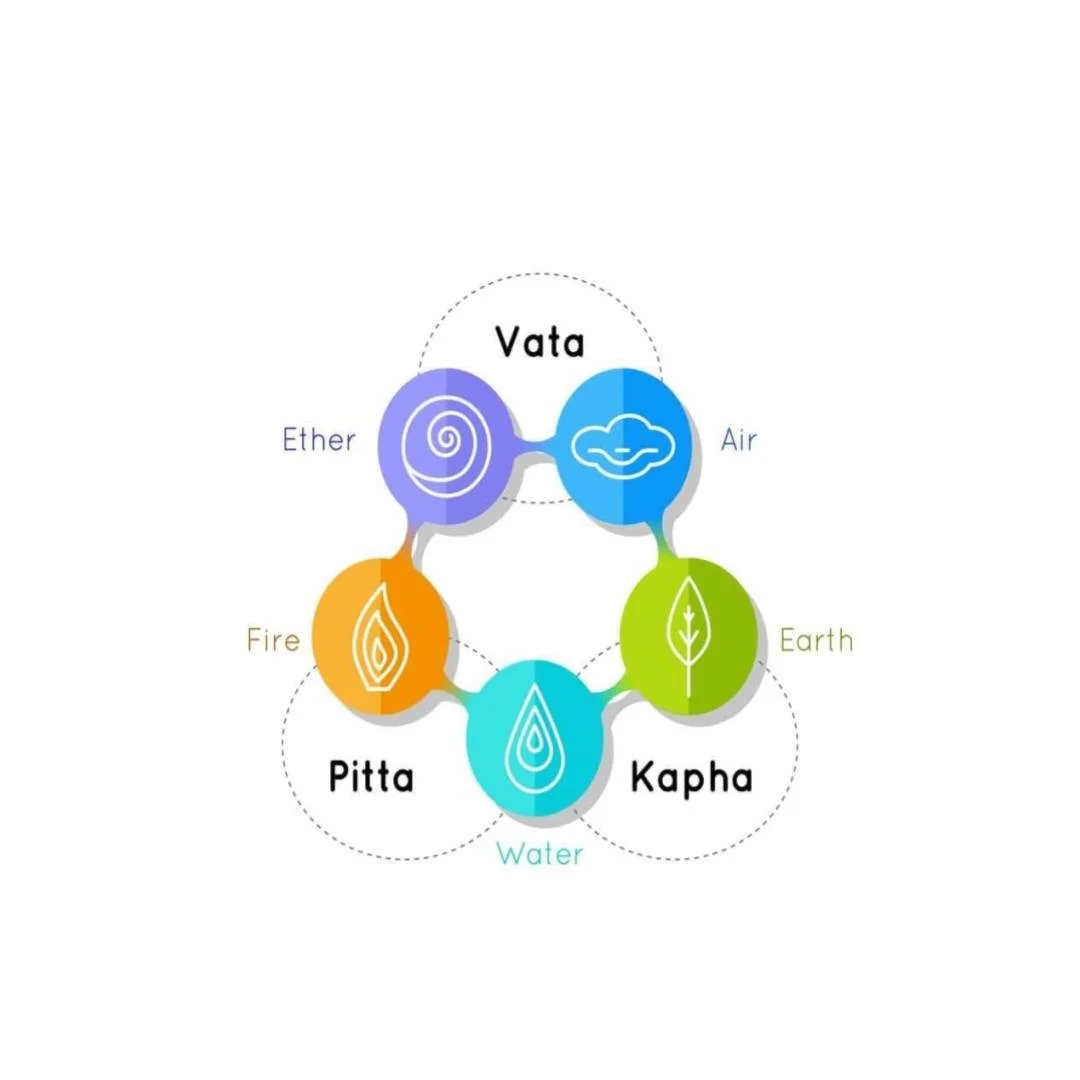Parentified Child
We learn to read our parents because our survival depends on it. Codependency is emotional. I’m very worried about what you’re feeling. I take responsibility for your feelings and try to cajole you into a better mood because my survival depends on your good will towards me and I need your protection.
Survival Responses and Boundaries
People who are not emotionally regulated are less likely to respect boundaries. When we are not emotionally well regulated, we are less likely to respect the boundaries other people set, and are less able to set and maintain our own boundaries.
Where Do You Have Agency?
We can sharpen our neuroception and we can build strength and resilience. We can continue to bring compassion and kindness to our relationship with ourselves. From this strong foundation, we can act.
Energy of Our Thoughts
Most troubling thoughts are generated by the nervous system trying to keep us safe.
The main practice of working with witnessing thoughts is to increase the accuracy of our perception of the safety and danger in our present moment situation. We learn about how thought works generally and our own patterns specifically.
Why Is It So Hard To Be In Our Body?
Somatic Mindfulness works with our body as it signals danger through sensation. We listen to our body to learn:
When did I tighten up and why?
What specifically was happening at the time that I perceived as a threat and that activated hypervigilance?
Can I stay present in my body and with my breath?
Can I stay connected with myself, maintain self-regulation, and awareness of my adult self?
Somatic Mindfulness
What are you signaling to your nervous system through your body, breath and brain?
As you move through your day, keep some attention on your body and breath. Tension in your muscles or holding your breath will alert you to your nervous system signals, and you can use grounding and orienting practices to come back.
Strong Back Decision Making
I can tolerate disappointing people
What happened in your body as you read these words? I felt a heaviness in my chest. I took a deep in breath and a long exhale and softened my neck and shoulders.
Two months ago I made a big decision. I had been thinking about it for awhile.
Practicing Peace
If we learn to open our hearts, anyone, including the people who drive us crazy, can be our teacher. We can use our difficulties and problems to awaken our hearts.”
When we feel threatened and go into a survival response, we strike out for protection. We don’t actually want to make it worse, but this is a hard pattern to avoid.
Pema has a suggestion. “We wonder how other people are doing and reflect on how our actions affect other people’s hearts.”
Thrown Out of the Nest
“To be fully alive, fully human, and completely awake, is to be continually thrown out of the nest.” Pema Chodron
When you are reading signals of danger, pause - who and what is alarming you?
Is there a clear and present danger and do you need to take action? If not, resist the urge to go into fight/flight/freeze and stay with it to inquire.
Balancing Our Doshas
I’ve organized this step of understanding and applying Ayurvedic principles specific to balancing our doshas into three areas: pranayama, abhyanga (self-massage), and nutrition. You might be inspired to try one thing from each area or focus on one for awhile to see what happens.
Ayurvedic Constitution: 3 Doshas
The doshas are a fundamental concept in Ayurveda, an ancient system of medicine from India. According to Ayurveda, the human body is composed of three primary doshas, or energies, which are responsible for different functions in the body. Your prakriti is what is most consistent over time and your vikriti relates to the present state in your constitution.
Minimizing and Dismissing Trauma
Why do we minimize our own trauma?
We compare and see our trauma as less than other people’s
Why do we compare and try to one-up other people’s trauma?
We don’t want to believe it could happen to us so we blame them
Why do other people dismiss us?
Easing Fear and Dread
Don’t be silly. You’re exaggerating. It won’t happen to you. We protest. You don’t know that. Bad things happen all the time!
Our predictive brain, with its negativity bias, tries to apply what it knows to other situations. If this bad thing could happen in this situation then ...
Driving Anxiety
Are you anxious or terrified while driving? Have you stopped driving because it feels unsafe?
Fears and beliefs arise from our direct and indirect experiences. There are many ways to support ourselves in healing driving anxiety.
We can explore the exact thoughts and feelings causing the anxiety, and calm ourselves enough to safely drive again.
Social Anxiety
Our culture is fond of phrases like Just Do It! When we’re dealing with social anxiety and other types of fear, this is counter productive and shaming.
Our nervous system predicts safety and danger and generates survival responses based on our experience. We can hold ourselves with patience and kindness and also take steps to heal.
Fawning, People Pleasing
A fawning response is a submissive and excessively flattering reply or reaction to someone in a position of authority or perceived higher status. It can be seen as insincere or overly deferential, and may be used as a way to seek favor or avoid criticism. Fawning responses include flattery, compliments, or excessive agreement with the other person's opinions or actions.
I’m Outta Here!
We need direct experiences that it is okay to be present to our lives and our feelings. This is what updates our previous conditioning that it is not safe to be here.
Escape or flight takes many forms. We may be addicted to food, alcohol and other drugs. Perhaps we get relief using shopping, gambling or overwork. Addiction is a common trauma response and is rampant in our society because it is so effective in helping us escape.
Polyvagal Ladder: Fight
Someone who is emotionally flooded into a fight response can be scary to be around. Lashing out verbally or physically triggers fear in others. We walk on eggshells to not set them off.
The brain likes electrical stimulation and feeds on anger like kindling. Instead of feeling overwhelmed and scared, someone in a fight response feels like they are taking action and protecting themselves.
Up the Polyvagal Ladder
We all move up and down the polyvagal ladder, and we usually have a go-to response based on childhood conditioning. Our nervous system assesses threat and the best option for survival, sending us into one of these protective strategies. Each form of protection has advantages and disadvantages.
Freeze can look like numb, disconnected, and hunkered down for safety. Freeze takes the edge off of painful, overwhelming experiences. We might hold our breath to avoid notice. We disconnect from others. It’s safer “in here”.
My Spiritual Home
Working with the five koshas, we relax our body, our breath becomes diaphragmatic and smooth, and we work more skillfully with thoughts in the lower level of the mind (mostly generated by hypervigilance). This opens the doorway to our intuitive wisdom, and to deep layers of peace in the vast silence of the mind.
In this stillness, we develop the capacity to be aware of the ever-present Witness, the part of our being that is ever pure, ever wise, ever free.
